PA-34 Seneca III TO & Landing Performance Stuff…
Hi All!
Just a quick question but first a shout out to the Forum for a couple things…
First off, Thank You for all your help during the handful of months I’ve been here!
I’ve gotten help on everything from Landing Gear Lights to Insurance Rates, so Thank You!
Second, on a personal note, I recently got a note from another Ohio pilot who saw my posts here. He is interested in purchasing a Seneca and would like to see one up close, we are making arrangements now to get together for a play date so he can look at the airplane and go fly.
I did that myself when I was in my search and it certainly helped me during my hunt for the “Perfect Airplane”!
Enough of that, now the question…
I’m looking at Seneca III performance,Takeoff, Accelerate/Stop and Landing Distance in particular.
Being new on the airplane (<100 hrs. In M/M), I have limited the airports I’ve gone into with 3,000’ being the shortest runway.
I’m looking for some sage advise on going into shorter strips, using Piper Performance Chart numbers and typical Pilot techniques IAW the POH.
I operate primarily at SL to 1000 MSL airports, well below MGWTO and the numbers all say I should fit, the Accelerate Stop numbers being the only ones that are close. In the Air Force /Airline World we called that concept “Balanced Field Length”, an important part of our Mission/Flight Planning.
So I’m just wondering what you guys think and what you have been going into and out of with your Seneca’s?
There are a few Lake Erie Island runways up here that are 1800-2200’ long…too short, just enough or plenty of room??
Your Thoughts!?
Thanks in Advance!
Stay Safe, Fly Fun!
George
KLPR

Comments
Hi, I would be happy to take him up in the Portland, Oregon area.
If you refer to the short field takeoff accelerate and stop distance chart with flaps and a lift off at Vmc speeds 2000 ft would be doable lightly loaded but probably never comfortable.
Taking off at redline leaves no margin for engine out and you would almost certainly be committing to immediately pulling back both throttles and landing on whatever was available for a low altitude engine out.
Landing speed and weight are two huge factors. If you come in a 90 kt close to gross it is > 1600 ft and lightly loaded at 68 kts over the fence < 1000 ft. For short field VG's and a calibrated angle of attack sensor would be key
Eric Panning
1981 Seneca III
Hillsboro, OR (KHIO)
George,
Being from Missouri (at least in spirit...) my suggestion is to go practice the short field maneuvers at your nearest Class C/D, and see what you get. Coordinate your experiment with the controller, and she'll probably tell you it's the most excitement she's had all day. I also find I give it my best effort when I know there's someone up in the tower watching and calling out my runway markers. After a couple of attempts I usually beat the book numbers by quite a bit. This experiment is also a great opportunity to make sure all systems related to performance - props, engines, turbos, rigging, etc - are working properly while in a less demanding environment.
I'll record all the results, loading, wind conditions, altitude etc and keep them in the back of the POH. That way when the 1500' runway comes up, I'm very confident there will be no issues.
Bob
Hi Eric & Bob,
Thank You both for the quick reply and your valuable input!
Because of that I researched VG’s here on the Piper Forum and found some additional information.
Scott even mentioned in a reply that they seem to work well on the Seneca.
“Knots2U” has a VG product that gets good reviews.
As suggested, I’ll practice Shortfield some more using the fixed distance markers and/or runway lengths off the Airport Diagram to see how well I fit.
Thanks again for the input and all the help!
Stay Safe, Fly Fun!
George
KLPR
Hey George, if you want to talk to my Seneca friend that has them, let me know and I'll get you in touch with him.
Scott Sherer
Wright Brothers Master Pilot, FAA Commercial Pilot
Thanks again for this quick reply!
Yes! That would be Great!
It would be interesting to see how he likes running out of that 2200’ strip you mentioned and how much the VG’s do actually help!
I’m looking at a Condo near 3T7, Middle Bass Island, just NW of CLE and a short 15 minute flight for me.
It’s 1852’ of nice smooth E-W asphalt, I used to go outa there all day long in the Warrior I flew, but it’s kinda tight for me now in the Seneca, maybe too tight with the ASDA unless the VG’s might change that a bit??
Put-in-Bay, 3W2, on an Island just to the South is about 2900’ with displaced thresholds and I feel comfortable going in with the Seneca now.
The 1800-2200’ hard surface strips are just a bit of concern.
So a visit with your friend Scott would be nice, thank you!
My email is HGeorgeC@aol.com
Stay Safe!
George
KLPR
Stand by George. I've contacted him...
Scott Sherer
Wright Brothers Master Pilot, FAA Commercial Pilot
The approaches for 3T7 are relatively clear from the photos and you could travel light on fuel as it is a short hop. How many persons/gear do you need to ferry out and back?
Eric Panning
1981 Seneca III
Hillsboro, OR (KHIO)
Hi Eric,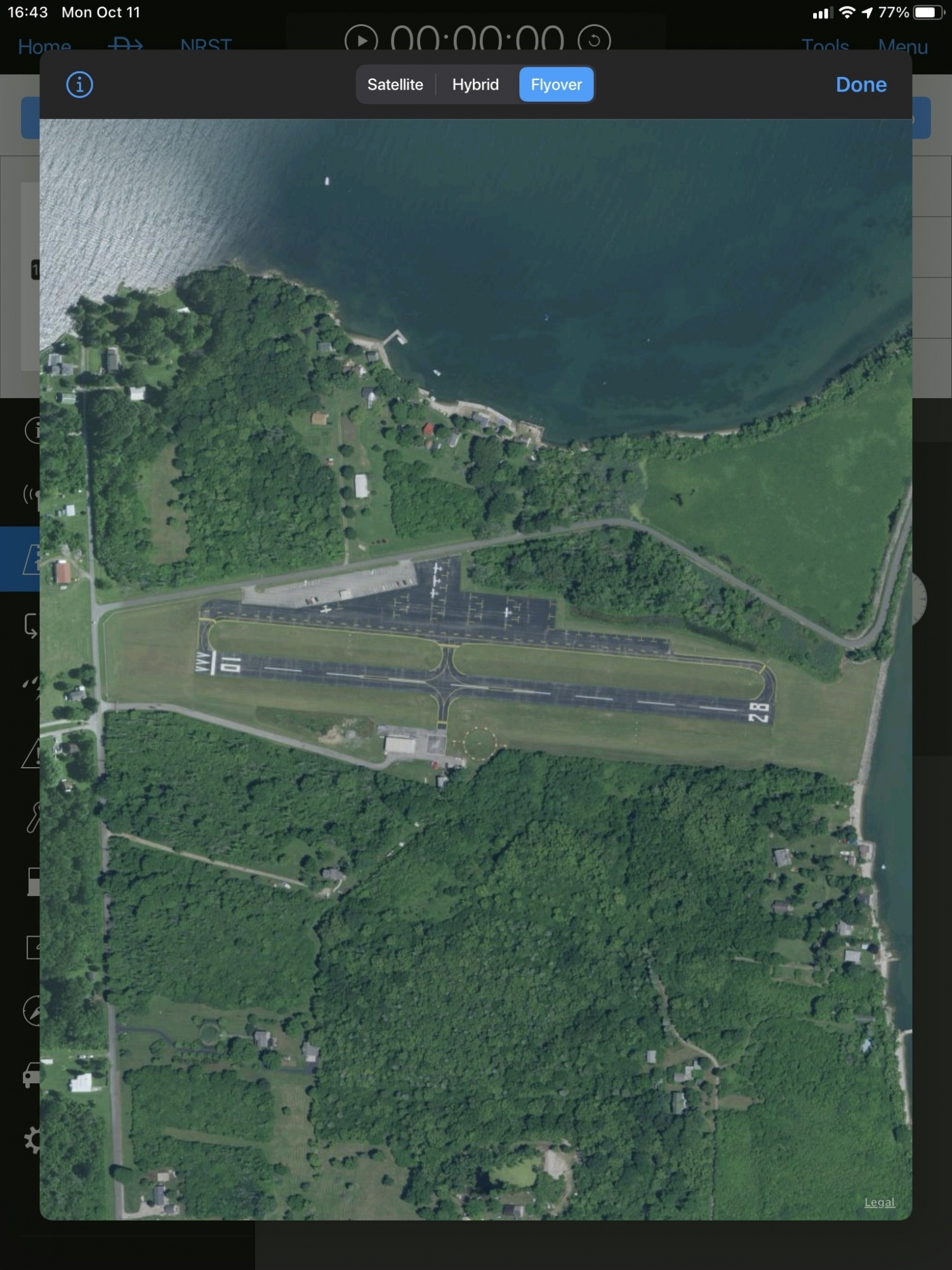
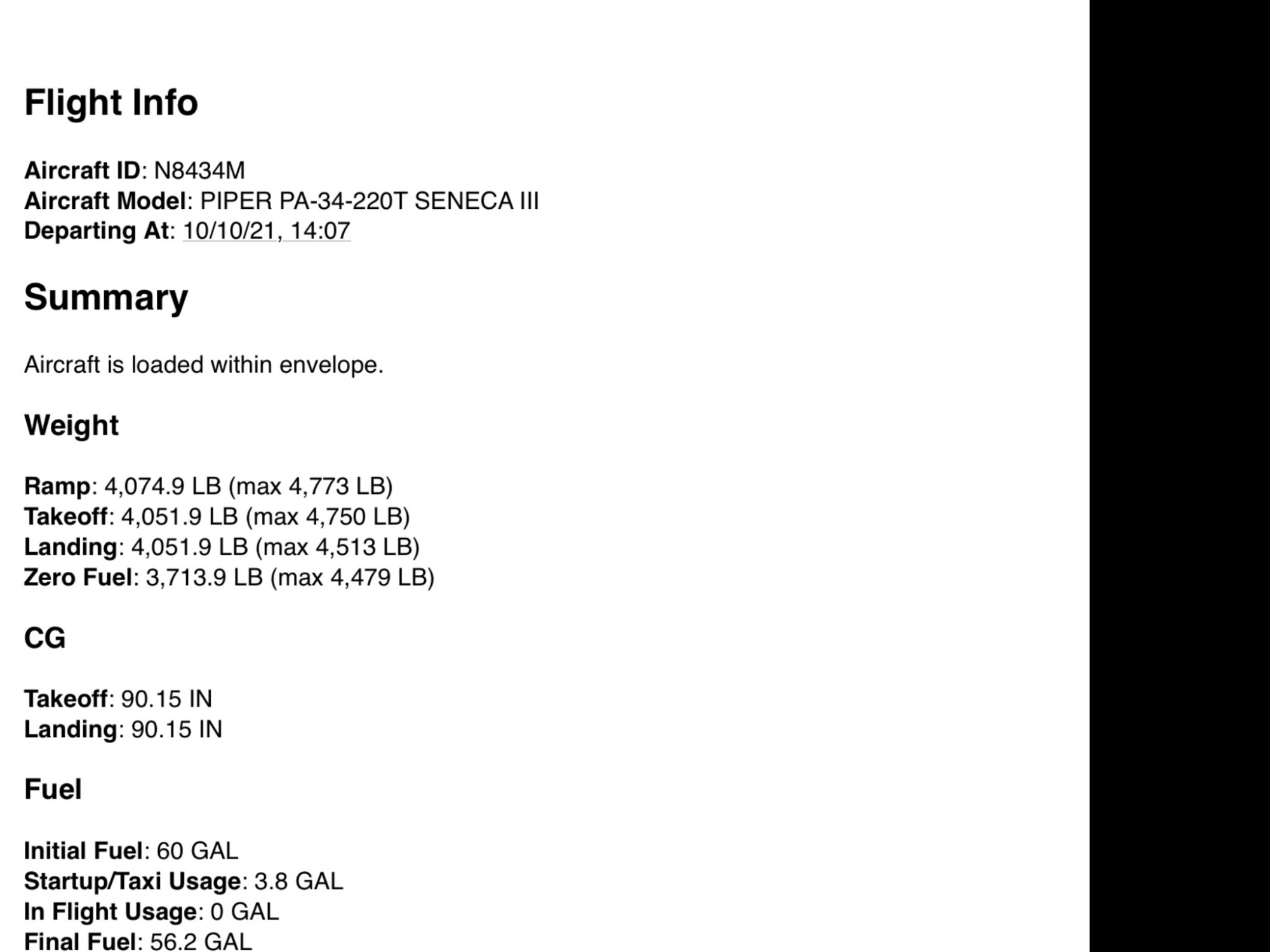
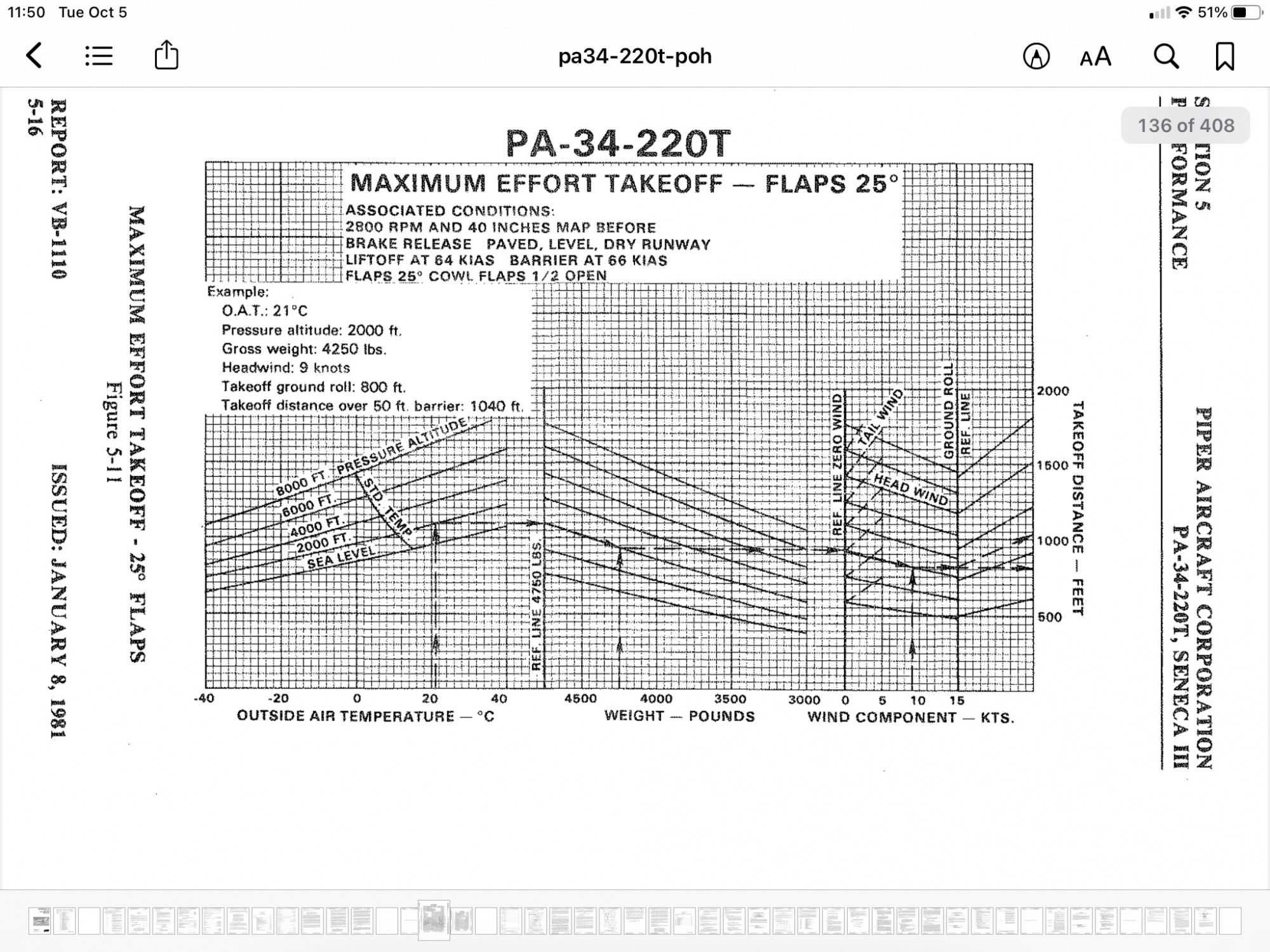
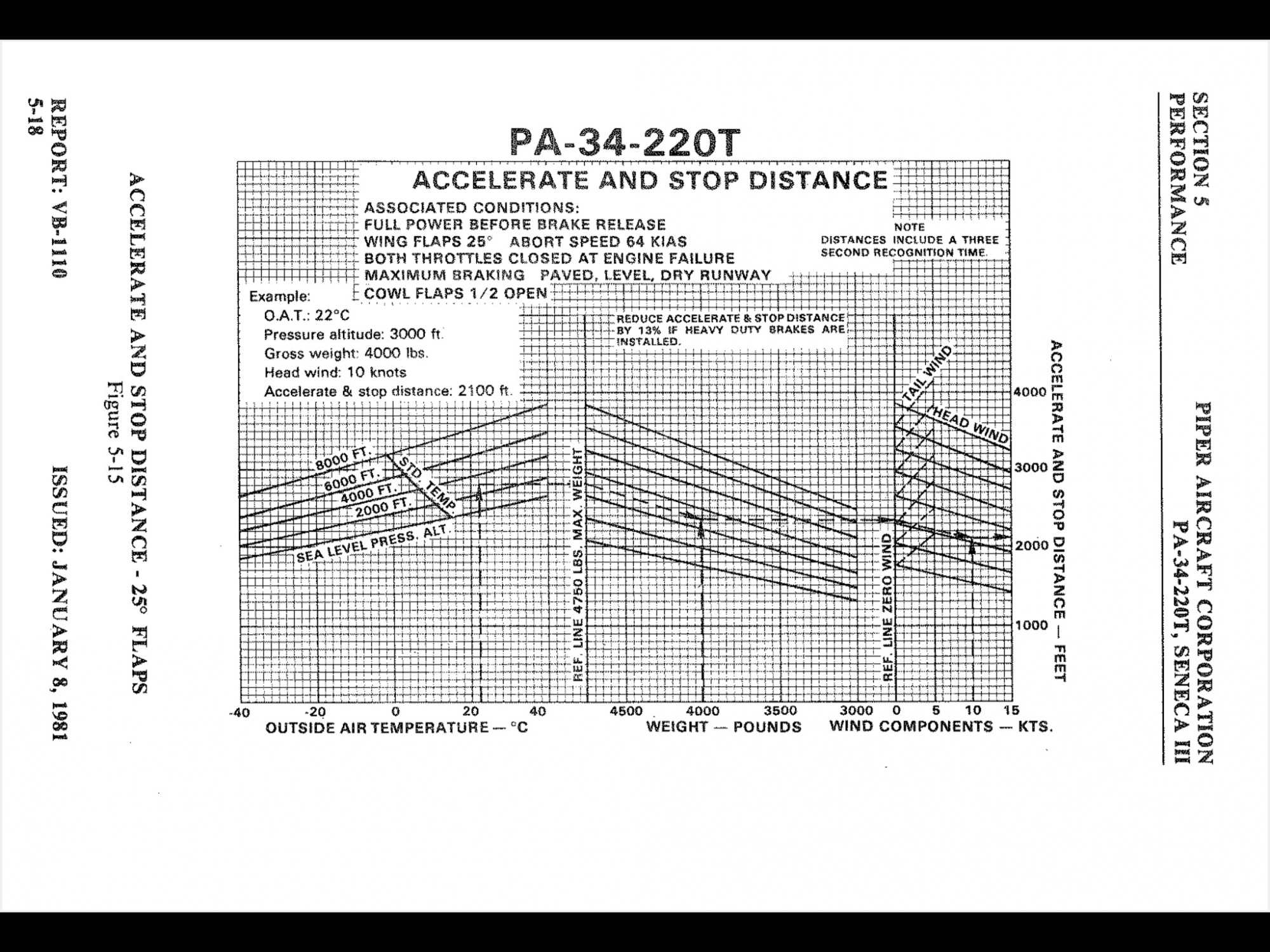
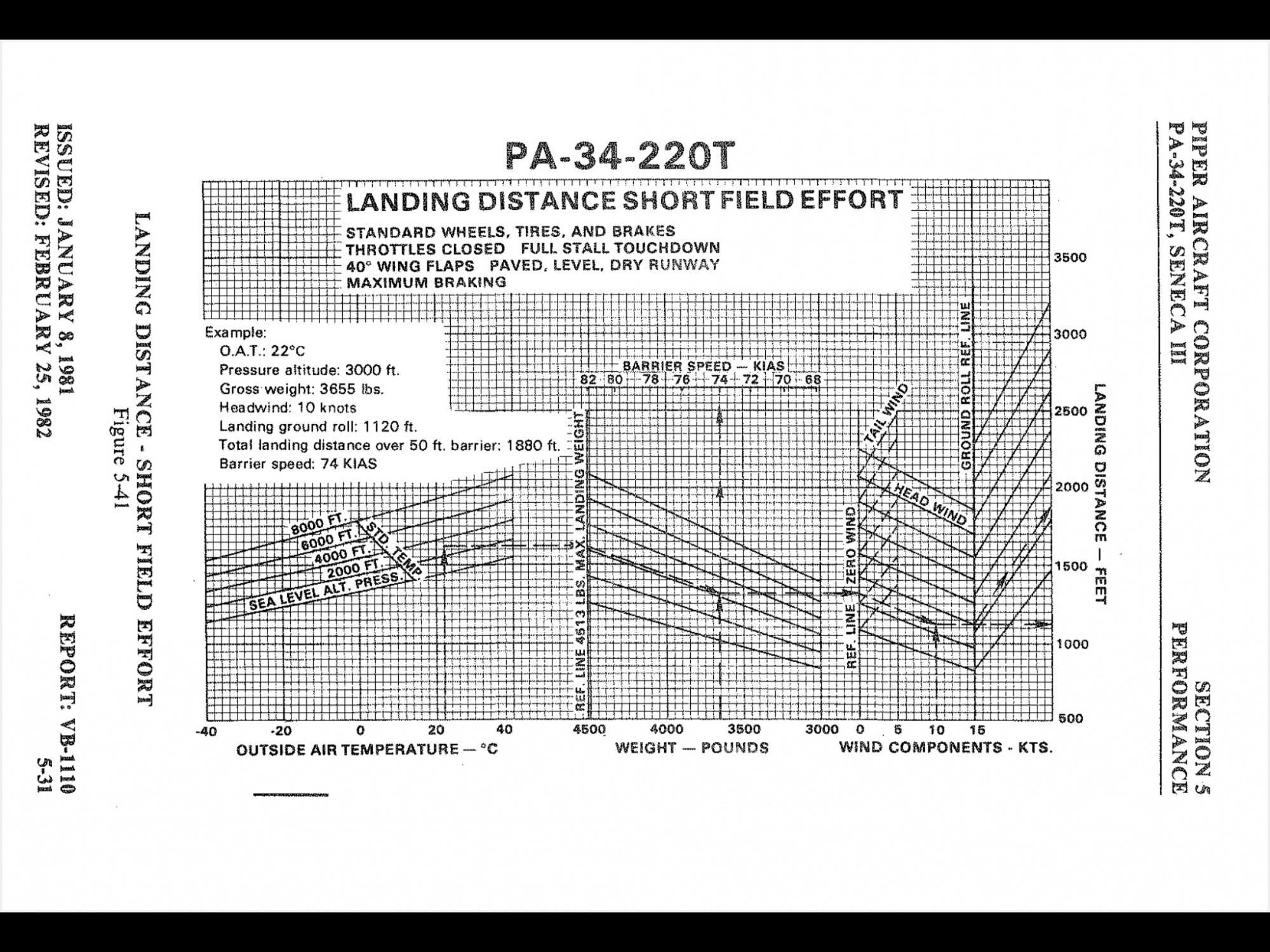
Thank You for your note!
OK…
Yes 3T7 is a nice airport, sits on Middle Bass Island, a part of the Lake Erie “Bahamas”! 😁
The approach to Rwy 28 is overwater, so it’s possible to drag it in a bit and touchdown on brick 1 alittle easier then Rwy 10 which is pretty much overland on short final, it does have a slight displaced threshold of 52’ as there is a north-south road right at the end of the runway. Published Runway Length is 1852’.
So a bit short.
As far as my Seneca…
With 2 people, a overnight bag, the “Permanent Ships Equipment” (a couple qts of oil, tie down kit, small tool kit, Piper Ext Power Plug cable, chocks and Survival/First Aid Kit), 60 gallons of AvGas (that’s a half hour VFR reserve (12 gal) and about 2 hours cruise (2 x 24 gph), using very crude Flight Planning numbers, we only weigh about 4,051 lbs., as you know with our III’s the Max Ramp Wt is 4773, so we’re pretty light. I figure about a 30 minute flight block to block, 12 gals @ 6 lb/gal gives us a landing weight of about 3979 lbs. I have been using 60 gal as my Standard Ramp Fuel Load. I could drop it down, but not to less then 1 hour + 30 min reserve, so about 40 gal, but 50 would make me feel more comfortable…
Out of our Piper Seneca III POH…
The Takeoff Data based on 20C, 1000 PA, 4051 TOW, no wind, Max Effort (Fig 5-11) gives us 850’ Ground Run, 1050’ Over 50’.
The ASDA (Fig 5-15) using same numbers gives us 2100’, which is troublesome since we only have 1852’ available and a Rejected TO might put me off the Runway and into the Overrun Area. About 1827’ with Heavy Duty Brakes (interesting) I’m not sure if I have them installed, I don’t think so, gonna find out.
And finally Landing Distance, which should be first ‘cause I gotta fly in if I wanna fly out, is Fig 5-41 Short Field, works out to be about 1300’.
So those are the POH numbers Eric.
I trust them as true when being conducted by a Piper Test Pilot.
Me, using normal techniques, Flaps 25, V1/Vr of 64 KIAS quickly accelerating to 66 KIAS on TO and Flaps 40, Vref of 82 KIAS for Landing, would be close but I’m not sure how close and what guys flying the III are using as Minimum Runway Lengths.
Also I read somewhere when operating on grass add an additional 14-18%.
So thanks again Eric for helping me work through this…
Your Thoughts!?
Stay Safe, Fly Fun!
George
KLPR
Hi Scott,
Thank You for John’s email address, got it!
I will reach out to him!
George
KLPR
OK George. Good luck...
Scott Sherer
Wright Brothers Master Pilot, FAA Commercial Pilot
George, your numbers look correct. The 25 degree flaps take off has a lift off close to Vmc so not much margin. Is this your normal procedure? I always take off flaps up at a higher speed.
In addition to Vg's an AOA indicator would also be a big help. Assuming the Vg's offer a 3 mph reduction in the over the barrier speed it would be worth about 200 ft improvement in landing distance.
If your POH is current you will see the over the barrier speed chart has been removed which I think is a shame.
The AOA will allow you to finetune approach speeds. Any headwind will also have a dramatic improvement in ground roll.
I am not sure on the brakes on my plane (if they are upgraded or not).
For short field operations getting the flaps up helps put more weight on the wheels for better braking. Also make sure your idle speed is correct as you don't want extra thrust on the rollout.
Eric Panning
1981 Seneca III
Hillsboro, OR (KHIO)
And Thanks again for the input!
Yeah, for “Normal Op’s” I use the POH recommended Flaps UP and V1 of 79 KIAS, that’s been working great!
I’m liking Flaps 25 and a Vref of 90 for normal landings.
My POH kinda does show 2 Vref’s for “Lightly Loaded” and “Shortfield” of 79 and 83 Knots.
I do not see a “barrier speed” in my POH, but as you were saying, as slow as 68 knots “over the fence”. I like that, I’ll try that lightly loaded!
Thanks again Eric for all your help!
Any more Seneca questions and I’ll get back to you!
Stay Safe!
George
I did reach out to your friend John in Florida and he got right back to me!
Thank You! He too is a wealth of information!
Not only on the AOA, VG’s and the Heavy Duty Brakes but on Seneca Stuff in General!
Between him and Eric I just ~might~ learn something!
Scary, I know!!! 😜
Thanks Again Sir!
Fly Fun!
George
You're welcome George!
Scott Sherer
Wright Brothers Master Pilot, FAA Commercial Pilot